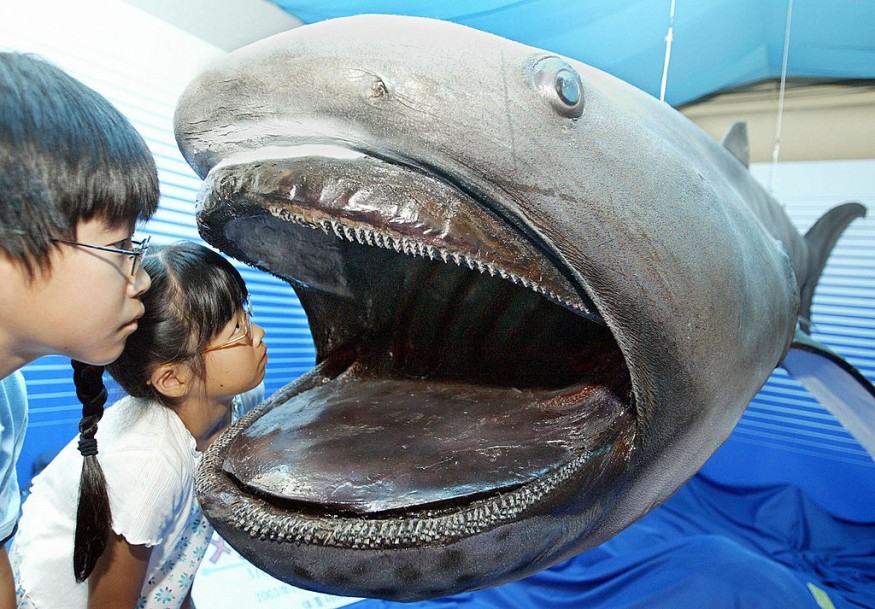David Stabile was fishing with his friends about 30 miles offshore when they saw two megamouth sharks swimming near their boat. He shared some videos on Twitter and wrote about their experience while fishing off the coast of San Diego.
"The thing about fishing is you never know what you're gonna find," Andrew Chang, one of Stabile's friends and fisherman who saw the sharks, told CBS8. Megamouth mouth sharks can grow up to 18 feet, but they are extremely unusual to see during the day. Records show that they have only been seen by humans about 269 times.
Mating Pair of Megamouth Sharks Spotted Off San Diego Coast
Alisa Schulman-Janiger, a research associate at the Natural History Museum of Los Angeles County, wrote on Facebook that the two megamouth sharks might be a mating pair. The first video shows a scarred female megamouth shark with no visible claspers and the second video a male with claspers clearly visible and a damaged left pectoral fin.
Newsweek reports that this species is usually found in deep water between the surface and as deep as 15,000 feet. They are filter feeders who swim with their mouths open to harvest plankton floating in the water.
Researchers tracking megamouth sharks discovered that these species travel incredibly slow at speeds between 0.93 mph to 1.30 mph. Also, they were observed to move up and down in the water column during sunrise and sunset, a behavior also observed in other marine animals that track the movement of plankton in the water column.
Scripps Institution of Oceanography researcher Dovi Kacev told CBS8 that megamouth sharks spend most of their time in deep water far from the shore. They are extremely rare and they were only discovered in 1976 when one was entangled in a sea anchor near Hawaii.
There are more things unknown about them, but they have been sighted sporadically, especially in Taiwan and the Philippines. The International Union for Conservation of Nature (IUSN) has listed them as a "Least Concern" species, mostly due to a lack of population data.

READ ALSO: 5-Foot Rarely Seen Frilled Shark With 300 Sharp Teeth Captured Off the Coast Near Portugal
More About Megamouth Sharks
With two new sightings of megamouth sharks in the Philippines this year and the two megamouth sharks recently seen in San Diego, the Florida Museum said that there are now 273 confirmed occurrences of the species around the world.
A small town in Taiwan is frequented by this species, especially being caught as bycatch in commercial drift nets. Experts said these sightings are likely due to commercial fisheries targeting filter feeders, like the megamouth sharks.
Research is still ongoing about this species, and previous studies show that this deep-sea creature only comes near the surface at night and mostly spends its time underwater. According to Oceana, the inside of the mouths of megamouth sharks are covered with light-producing organs to attract pelagic crustaceans and other potential prey.
In terms of reproduction, megamouth sharks mate via internal fertilization and give birth to large young. During the gestation period, the mother likely provides her offspring with unfertilized eggs to eat for nourishment. Then after birth, young megamouth sharks immediately become filter feeders.
Although they are not targeted in commercial fishing, they are often sold when accidentally captured. But with little information, researchers could not determine the conservation status of the species.
Check out more news and information on Sharks in Science Times.
© 2025 ScienceTimes.com All rights reserved. Do not reproduce without permission. The window to the world of Science Times.










